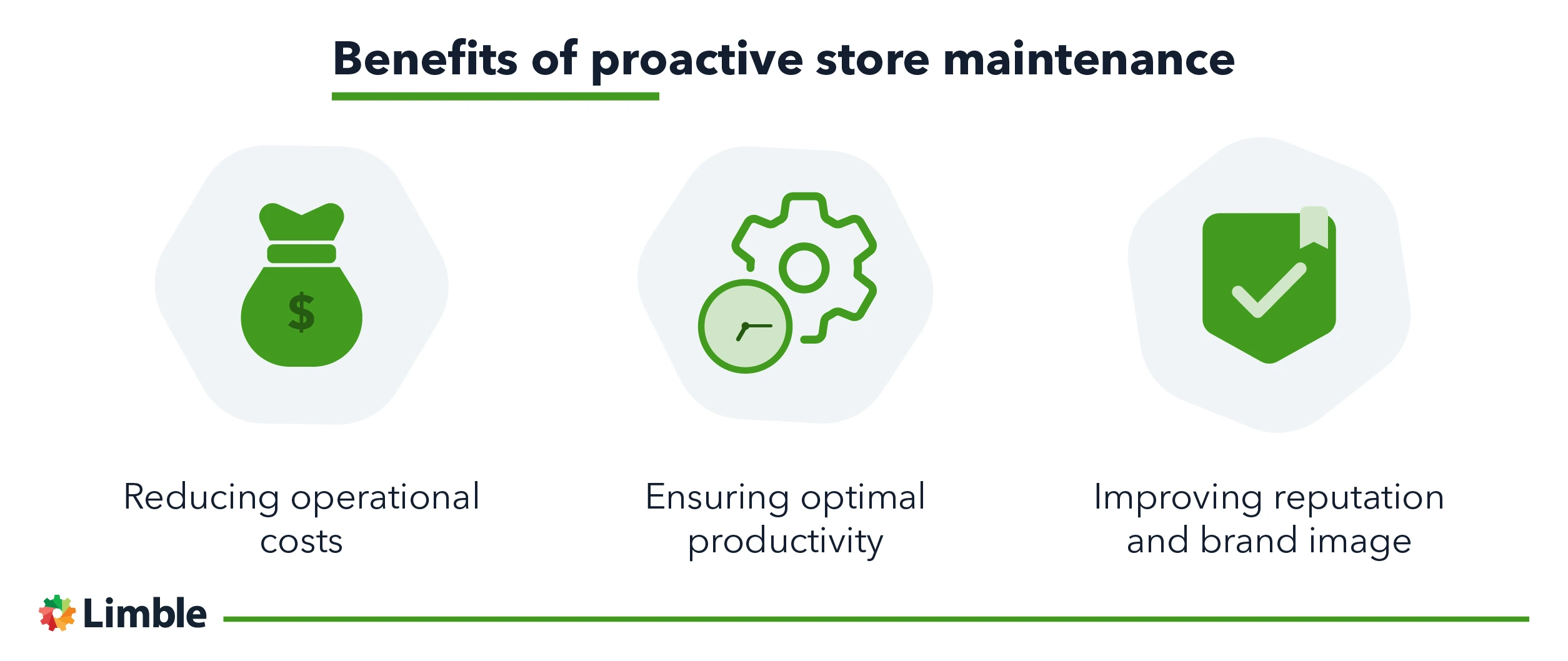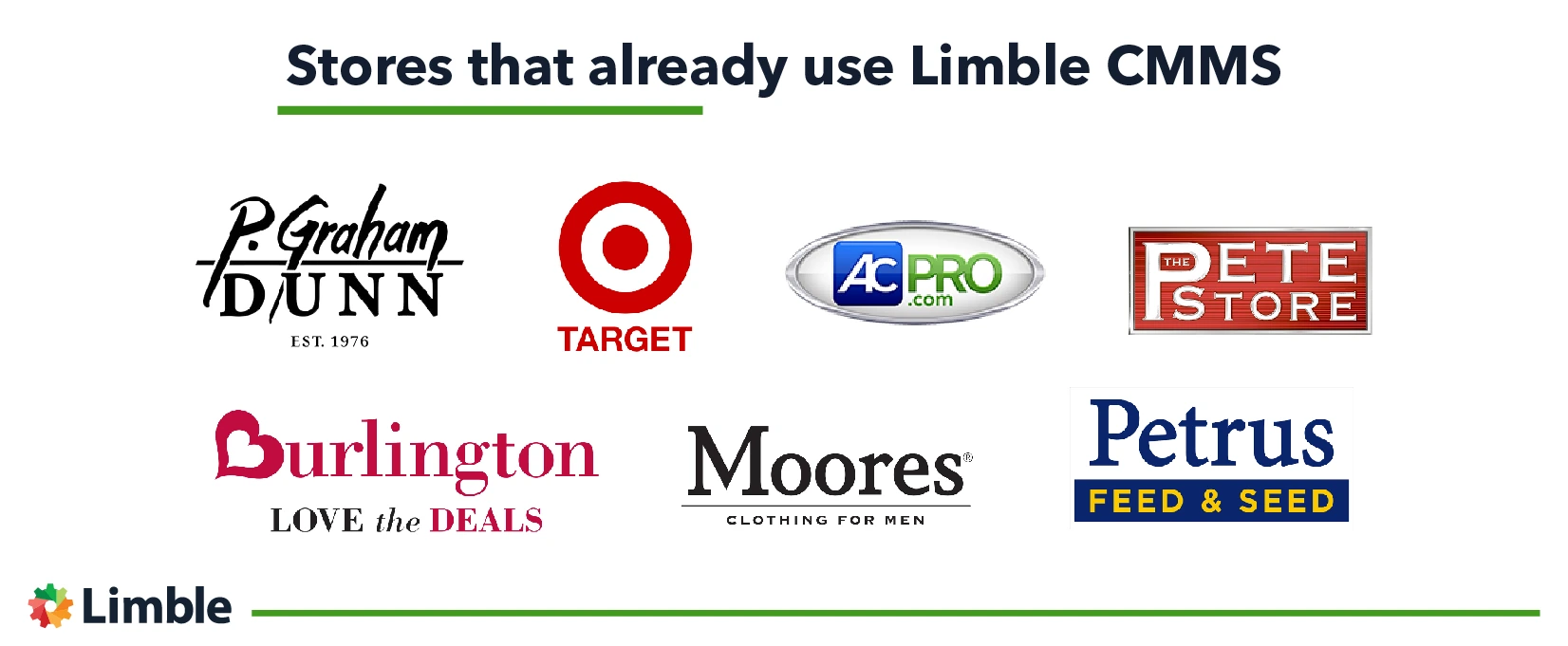Retail business is one of the biggest business sectors in the USA, with hundreds of thousands of brick-and-mortar retail stores located all over the country. All that real estate requires regular store maintenance to keep the premises physically sound and functional for shoppers and employees alike.
As a retail store owner, the last thing you want is daily complaints about maintenance-related matters, especially when those complaints could have easily been avoided. If left unchecked, these “little” maintenance issues can turn into an operational disaster.
To avoid such a situation, in this post we’ll be discussing the common pitfalls to avoid and everything else that you need to know to optimize retail store maintenance.
What does retail store maintenance include?
Retail store maintenance refers to a wide range of strategically planned maintenance activities aimed at keeping your store’s infrastructure safe and functional.
Store maintenance services can vary depending on the size of the building and the complexity of the physical assets owned. For instance, a large multi-story department store will have different requirements compared to a small family-owned shop.
Whatever the case, the more common store maintenance tasks include:
- General cleaning/janitorial services
- Parking lot upkeep
- Fire-fighting systems repair and maintenance
- Refrigerators and freezers repairs and servicing
- Water treatment and supply services
- CCTV installations and physical access control
- HVAC maintenance
- Waste management (refuse collection, disposal, and recycling),
- Electrical systems maintenance (fuse boxes, control panels, light fittings, emergency lighting, lighted signage, etc.)
- Lift or escalator maintenance (in high-rise stores)
- Store equipment servicing and repair (manual or automated cash registers, self-service kiosks, etc.)
- Commercial backup generator servicing and repairs
… and more.
Now that we have considered the details of store maintenance, it probably sounds like a lot of work. It is. However, it is an important part of store success and it can be streamlined by using the right tools and following best practices.
We will touch on both in the incoming sections.
Building Maintenance Checklist
Use this helpful template as a starting point for your building maintenance program.
How maintenance impacts retail stores
As the popular saying goes, prevention is better than a cure. Stores, like any other business that owns considerable physical assets, will operate more smoothly with a proactive maintenance approach.
Reducing operational costs
There are many advantages of adopting a proactive approach to maintenance in your store.
Taking steps to resolve issues with your machines and equipment as soon as possible will give you the best value for money with regard to costs like labor and spare parts.
For instance, let’s say a store manager notices a strange noise coming from your main air conditioning unit. It could be caused by anything from loose parts to a malfunctioning compressor.
Arranging to quickly tackle the issue before it deteriorates can save you the pain of spending even more money on emergency maintenance, which could include asset replacement and overtime pay (if that unit eventually breaks down on a busy weekend or a holiday).
This also applies to other kinds of assets and building systems like lighting, plumbing, or electrical equipment. Routine maintenance done when due, helps all assets run optimally. This translates to even more cost savings and an improvement in your store’s environmental footprint.
Last but not least, keeping your machines in good condition minimizes excessive wear and tear and the need to replace them prematurely. The longer your equipment lasts, the fewer capital expenditures you will have.
Ensuring optimal productivity
Stores rely on their equipment and staff to ensure that customers receive the level of service they expect. Unfortunately, unforeseen issues often crop up. Sometimes these issues might occur during peak periods when the store is packed with buyers.
Imagine the result of any of the following scenarios – your lights suddenly going off, or cash registers breaking down during a busy trading period. Nine times out of ten, these situations could have been avoided through regular maintenance.
Improving reputation and brand image
Now, put yourself in the shoes of the customers that you want to attract. One of the major reasons why retail stores engage in robust maintenance programs is to make their environment safe, comfortable, and appealing.
You can bet that no one wants to spend money or time in an establishment that appears shabby and poorly maintained. Adequate maintenance is a good business practice that benefits your brand’s reputation in the following ways:
- Happy customers can help to attract and grow a steady customer base.
- Your customers are more likely to leave good reviews if they enjoyed their time in your store.
- Maintenance is an investment that pays for itself over time, resulting in a property that will maintain, or even increase its value.
- Reducing the risks of negative publicity, liability, and litigation if a shopper is injured by a malfunctioning piece of equipment or by tripping on an untidy floor while in your store.
Another important factor in your store’s success is your staff. What kind of maintenance workers can you expect to hire? We’ll touch on that next.
Types of retail store maintenance jobs
To get all this work done, you’re going to need an efficient and well-organized maintenance department. The composition of your maintenance team will be largely influenced by the size of your building and the types of physical assets that need to be taken care of.
In most cases, your requirements will match other commercial buildings – a balanced mix of technical and non-technical workers.
#1) Technical workers
These are the workers that handle maintenance at the planning and execution levels, along with all the standard processes and procedures involved in facility management. The work that they do helps to improve asset reliability and reduces the risks of operational issues and equipment downtime.
To mention just a few, some of these positions include:
- Maintenance supervisors: They plan and assign work, then coordinate the rest of the team on a daily basis.
- Maintenance technicians: Their specializations can range from plumbing to different kinds of electrical and mechanical work. They will usually work directly on equipment, carrying out installations, repairs, and servicing.
#2) Non-technical workers
These workers are no less important than technical workers. They support the technical staff and work hand-in-hand with them to ensure that departmental goals are fulfilled. Some of these roles include:
- Spare parts storekeepers: They purchase inventory items, track and manage the maintenance inventory, and generate reports when required.
- Janitorial staff: They keep the entire store clean by sweeping, vacuuming, mopping, disinfecting, etc.
Note that the above positions are what is expected in a small to medium-scale retail store. For larger multinational retail chains and department stores, the maintenance department would be large enough to include positions like the facility manager and maintenance director.
With all that out of the way, let’s discuss best practices that you can implement to limit recurring problems and optimize your maintenance operations.
5 store maintenance best practices
In your bid to keep customers coming back, it’s important that you can guarantee a consistently pleasant experience. Everything counts – from parking lot issues to the state of your restrooms.
Follow these store maintenance best practices.
#1) Proactive maintenance is key
As we outlined earlier in this article, proactive maintenance is the way to go. Savvy organizations worldwide are using proactive maintenance strategies to reduce operational costs, maximize productivity, and minimize safety issues.
If you’re confused about how or where to begin, start by creating a simple preventive maintenance plan.
#2) Consider outsourcing
Keeping all your maintenance in-house is not practical and not advisable. You would have to have a huge maintenance team with specific maintenance certifications, expensive specialized tools, and a solid stock of spare parts.
Examples include the servicing and repairs of boilers, high-pressure piping, and various electrical work. Instead of the added stress of employing and managing more staff with this kind of specialized knowledge, a more cost-effective approach is to outsource maintenance to local subcontractors.
Outsourcing can help to take a considerable part of maintenance work off your hands and free up your staff to focus on executing their day-to-day maintenance activities.
Note, however, that in order to avoid problems with quality, compliance, and execution, it’s vital that every outsourcing arrangement is backed by a well-structured maintenance contract.
#3) Utilize a CMMS
Monitoring diverse maintenance issues in a busy retail store sounds like you could do with an extra set of eyes and hands! Luckily, you don’t need to stress over this.
There are apps you can use to significantly streamline and organize maintenance in any type of facility imaginable. None is better suited for this role than a computerized maintenance management system.
A modern CMMS like Limble gives you the framework to get every single maintenance job done right, and on time. With it, you can:
- Plan, schedule, and track preventive maintenance work
- Receive and manage maintenance work requests
- Create, assign, and track work orders
- Gain insights into maintenance spending and explore better cost-cutting alternatives
- Centralize, filter, and retrieve asset information for all equipment and machinery in a matter of seconds
- Track and monitor your vendors and contractors
- Streamline staff workflow
- Monitor staff performance
- Track, manage and forecast your MRO inventory needs
#4) Prioritize the maintenance of vital assets
Although every piece of equipment in your store requires attention, it’s prudent to place some of them on a priority maintenance schedule. Spending more resources on critical equipment like lighting and electrical controls, HVAC units, escalators, and fire-fighting installations is just a smart thing to do.
#5) Plan for peak periods
The retail industry experiences intensely busy days during specific times of the year. These periods often become a stress test for even the best maintenance teams. In the US, Black Friday and Christmas sales come to mind.
It’s important that you plan accordingly. To maintain a high level of productivity and ensure that important maintenance tasks don’t get overlooked when things get hectic, ask questions like:
- What changes do we need to make to our maintenance schedules? Which software can handle this seamlessly?
- Do we need more staff during this period and how do we onboard them quickly?
- Do we need to stock up on cleaning supplies, spare parts, or work tools during this period? What kind of items do we need and at which volume?
It can be a challenge to coordinate everything. Again, CMMS is your friend here as it will help you streamline and automate significant portions of your maintenance workflow.
Buy into the progress
Store maintenance requires a synergy of many moving parts, all aimed at keeping happy shoppers coming back and extending the lifespan of your assets. Implement the tips discussed above, combine them with a capable CMMS system, and observe how undue stress is leaving your shop floor.
For more info about using Limble CMMS and how it can help you take care of your store premises, request a personal walkthrough or start a free trial.

